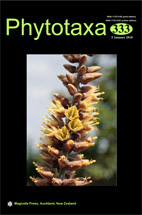Abstract
Pollen morphology of six Verbascum (Scrophulariaceae) taxa belonging to five different groups in the genus [V. georgicum (group E), V. nudatum var. nudatum (group F), V. cariense (group F), V. bithynicum (group H), V. pycnostachyum (group K), and V. lasianthum (group L)] was studied. Pollen slides were prepared according to the Woodhouse method and were examined with light-microscopy (LM) and Scanning Electron Microscopy (SEM). All studied pollen grains are generally monads, though tetrads (5 %) were observed in Verbascum nudatum var. nudatum. Pollen grains of all studied taxa were determined as isopolar and radially symmetric. In general terms, aperture types are trizonocolporate, but also trisyncolpate (V. lasianthum 10 %, V. pycnostachum 1 %, and V. georgicum 4 %) and trizonocolpate (V. cariense 10 %, V. bithynicum 10%, V. lasianthum 90%, V. pycnostachyum 9%, and V. georgicum 96 %) aperture types were observed. The shapes of the pollen grains were determined as prolate, subprolate, prolate-spheroidal and oblate-spheroidal. The sculpture was reticulate in all cases. The results of the study corroborate that morphological features, such as pollen shape, polar axis length (P), equatorial axis length (L), aperture type, surface ornamentation, muri thickness, and lumina shape, show differences which can be taken into consideration in the systematic discrimination within the groups, and also for discrimination of the groups in the genus.

